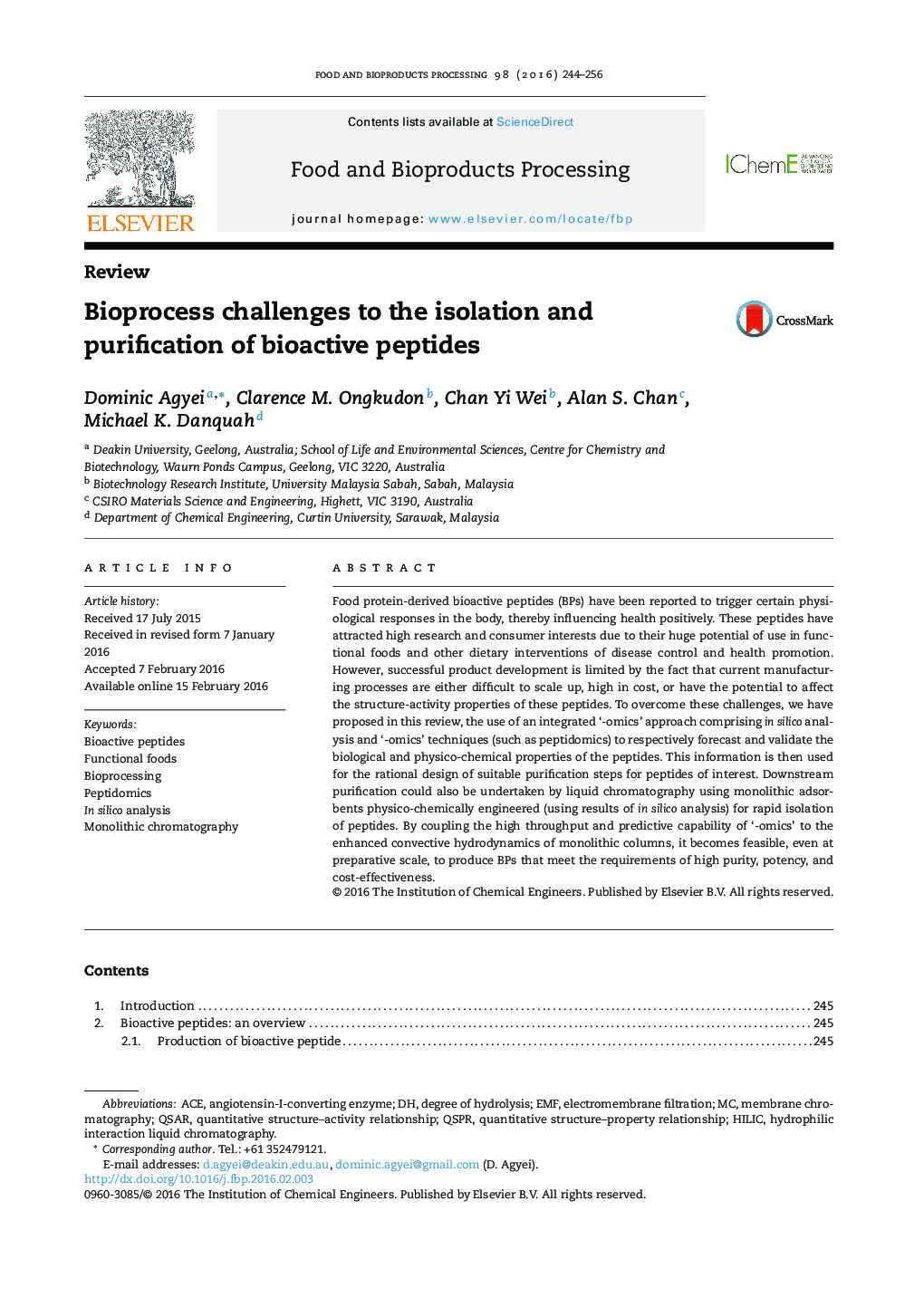| کد مقاله | کد نشریه | سال انتشار | مقاله انگلیسی | نسخه تمام متن |
|---|---|---|---|---|
| 18877 | 43036 | 2016 | 13 صفحه PDF | دانلود رایگان |
• Bioactive peptides (BPs) trigger physiological responses that can promote health.
• BPs have significant potential as active components in the formulation of functional foods and peptide-based therapeutics.
• Scale-up manufacturing of BPs is hampered by downstream bioprocessing challenges relating to biomolecular purification.
• ‘-Omics’ techniques and chromatographic purification using monolithic adsorbents offer prospects to overcome these challenges.
Food protein-derived bioactive peptides (BPs) have been reported to trigger certain physiological responses in the body, thereby influencing health positively. These peptides have attracted high research and consumer interests due to their huge potential of use in functional foods and other dietary interventions of disease control and health promotion. However, successful product development is limited by the fact that current manufacturing processes are either difficult to scale up, high in cost, or have the potential to affect the structure-activity properties of these peptides. To overcome these challenges, we have proposed in this review, the use of an integrated ‘-omics’ approach comprising in silico analysis and ‘-omics’ techniques (such as peptidomics) to respectively forecast and validate the biological and physico-chemical properties of the peptides. This information is then used for the rational design of suitable purification steps for peptides of interest. Downstream purification could also be undertaken by liquid chromatography using monolithic adsorbents physico-chemically engineered (using results of in silico analysis) for rapid isolation of peptides. By coupling the high throughput and predictive capability of ‘-omics’ to the enhanced convective hydrodynamics of monolithic columns, it becomes feasible, even at preparative scale, to produce BPs that meet the requirements of high purity, potency, and cost-effectiveness.
Journal: Food and Bioproducts Processing - Volume 98, April 2016, Pages 244–256
